 W
WThe European wars of religion were a series of Christian religious wars which were waged in Europe during the 16th, 17th and early 18th centuries. Fought after the Protestant Reformation began in 1517, the wars disrupted the religious and political order in the Catholic countries of Europe. However, religion was only one of the causes, which also included revolts, territorial ambitions, and Great Power conflicts. For example, by the end of the Thirty Years' War (1618–1648), Catholic France was allied with the Protestant forces against the Catholic Habsburg monarchy. The wars were largely ended by the Peace of Westphalia (1648), establishing a new political order now known as Westphalian sovereignty.
 W
WThe Bocskai uprising was a great revolt in Hungary, Transylvania and modern Slovakia, between 1604 and 1606 against Rudolf II, Holy Roman Emperor, during the Long Turkish War. The leader of the rebels was Stephen Bocskai, a significant Protestant Hungarian nobleman. The great Ottoman war burdened the Hungarian Kingdom and led to famine and epidemics. The armies of the Christian states also destroyed as the Ottoman and Tatar forces.
 W
WBohemian Crusade of 1340 was military expedition against Waldensians in Bohemia. The crusade was announced by pope Benedict XII through the papal bull at the request of the local lord Oldřich of Hradec, who also took command of the crusade personally. The expedition was unsuccessful, damaged the local economy and the reputation of the Kingdom of Bohemia, which later affected the crusades against the Hussites.
 W
WThe Cologne War (1583–88) was a conflict between Protestant and Catholic factions that devastated the Electorate of Cologne, a historical ecclesiastical principality of the Holy Roman Empire, within present-day North Rhine-Westphalia, in Germany. The war occurred within the context of the Protestant Reformation in Germany and the subsequent Counter-Reformation, and concurrently with the Dutch Revolt and the French Wars of Religion.
 W
WThe Count's Feud, also called the Count's War, was a war of succession that raged in Denmark in 1534–36 and brought about the Reformation in Denmark. In the international context, it was part of the European wars of religion. The Count's Feud takes its name from the Protestant Count Christopher of Oldenburg, who supported the Catholic King Christian II, deposed in 1523, over the election of Christian III, a staunch Protestant who had already implemented Lutheranism as the state religion in Schleswig and Holstein in 1528.
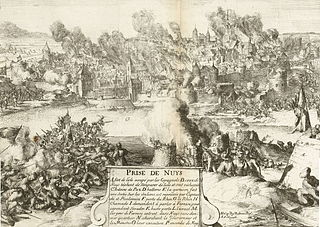 W
WThe Destruction of Neuss occurred in July 1586, during the Cologne War. Alexander Farnese, Duke of Parma's troops surrounded the city of Neuss, an important Protestant garrison in the Electorate of Cologne. After the city refused to capitulate, Parma's army reduced the city to rubble through a combination of artillery fire, destructive house-to-house fighting, and plundering; during the battle, a fire started that destroyed most of the rest of the city. Approximately 3000 civilians died, out of a population of around 4500, and the entire garrison was killed.
 W
WThe Eighty Years' War or Dutch War of Independence (1568–1648) was a revolt of the Seventeen Provinces of what are today the Netherlands, Belgium, and Luxembourg against Philip II of Spain, the sovereign of the Habsburg Netherlands. After the initial stages, Philip II deployed his armies and regained control over most of the rebelling provinces. Under the leadership of the exiled William the Silent, the northern provinces continued their resistance. They eventually were able to oust the Habsburg armies, and in 1581 they established the Republic of the Seven United Netherlands. The war continued in other areas, although the heartland of the republic was no longer threatened. This included the origins of the Dutch colonial empire, which began with Dutch attacks on Portugal's overseas territories. At the time, this was conceived as carrying the war with the Spanish Empire overseas due to Portugal and Spain's being in a dynastic union.
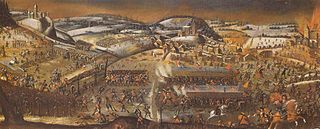 W
WThe First War of Villmergen was a Swiss religious war which lasted from 5 January until 7 March 1656, at the time of the Old Swiss Confederacy. On the one hand were the Protestant cities of Zürich and Bern, on the other the Catholic places in Central Switzerland. The Protestants tried to break the political hegemony of the Catholics, that had been in existence ever since the Second Kappel Landfrieden of 1531. The casus belli was the expulsion and execution of Protestants from the Schwyz commune of Arth. The Zürcher unsuccessfully besieged the Central Swiss-allied city of Rapperswil and thereby drove their forces together. The Bernese were defeated and repelled in the First Battle of Villmergen. The Third Landfrieden ended the conflict and restored the pre-war balance of power.
 W
WThe Battle of Fleurus of August 29, 1622 was fought in the Spanish Netherlands between a Spanish army, and the Protestant forces of Ernst von Mansfeld and Christian of Brunswick during the Eighty Years' War and Thirty Years' War. The bloody struggle left the Protestants mangled and the Spanish masters of the field, but unable to block the enemy's march.
 W
WThe French Wars of Religion were a prolonged period of war and popular unrest between Catholics and Huguenots in the Kingdom of France between 1562 and 1598. It is estimated that three million people perished in this period from violence, famine, or disease in what is considered the second deadliest religious war in European history.
 W
WThe German Peasants' War, Great Peasants' War or Great Peasants' Revolt was a widespread popular revolt in some German-speaking areas in Central Europe from 1524 to 1525. It failed because of intense opposition from the aristocracy, who slaughtered up to 100,000 of the 300,000 poorly armed peasants and farmers. The survivors were fined and achieved few, if any, of their goals. Like the preceding Bundschuh movement and the Hussite Wars, the war consisted of a series of both economic and religious revolts in which peasants and farmers, often supported by Anabaptist clergy, took the lead. The German Peasants' War was Europe's largest and most widespread popular uprising prior to the French Revolution of 1789. The fighting was at its height in the middle of 1525.
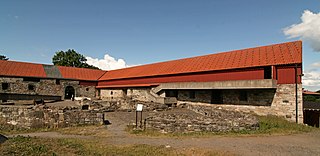 W
WThe Siege of Hamar was a short siege that lasted for three days in late June 1537, between the forces of Catholic bishop Mogens Lauritssøn and noble Truid Ulfstand. Truid Ulfstand and his forces came down from Trondheim to arrest the bishop as a part of the Reformation in Denmark–Norway and Holstein. The bishop heard that he was going to be arrested and barricade himself and his men inside his farm at Hamar before the Protestant troops came. The Protestant troops where superior both in numbers and military tech, and when the Protestant troops arrived they laid siege to the farm. The commander of the Protestant forces had a parley with the bishop, and gave him three days to surrender or he would burn the farm. On the third day of the siege the bishop surrendered and was taken as a prisoner to Denmark, where he died in 1542.
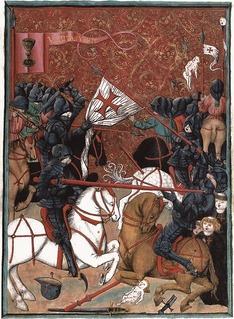 W
WThe Hussite Wars, also called the Bohemian Wars or the Hussite Revolution, were a series of wars fought between the Christian Hussites and the combined Christian Catholic forces of Holy Roman Emperor Sigismund, the Papacy, European monarchs loyal to the Catholic Church, as well as various Hussite factions. After initial clashes, the Utraquists changed sides in 1432 to fight alongside Roman Catholics and opposed the Taborites and other Hussite spinoffs. These wars lasted from 1419 to approximately 1434.
 W
WThe Irish Confederate Wars, also called the Eleven Years' War, took place in Ireland between 1641 and 1653. It was the Irish theatre of the Wars of the Three Kingdoms, a series of civil wars in the kingdoms of Ireland, England and Scotland – all ruled by Charles I. The conflict had political, religious and ethnic aspects and was fought over governance, land ownership, religious freedom and religious discrimination. The main issues were whether Irish Catholics or British Protestants held most political power and owned most of the land, and whether Ireland would be a self-governing kingdom under Charles I or subordinate to the parliament in England. It was the most destructive conflict in Irish history and caused 200,000–600,000 deaths from fighting as well as war-related famine and disease.
 W
WThe Laggan Army, sometimes referred to as Lagan Army, was a militia formed by Protestant settlers in the fertile "Laggan Valley" of county Donegal in the Plantation of Ulster during the time of the Irish Rebellion of 1641. The name "Laggan" is derived from the old Celtic root of "lag" or "lug" which means a "flat place."
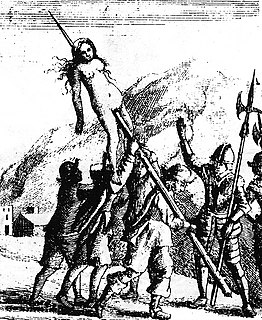 W
WThe Piedmontese Easter was a series of massacres on Waldensians by Savoyard troops in the Duchy of Savoy in 1655.
 W
WThe Savoyard–Waldensian Wars were a series of conflicts between the community of Waldensians and the Savoyard troops in the Duchy of Savoy from 1655 to 1690. The Piedmontese Easter in 1655 sparked the conflict. It was largely a period of persecution of the Waldensian Church, rather than a military conflict. Joshua Janavel (1617–1690) was one of the Waldensian military leaders against the Savoyard ducal troops.
 W
WThe Schmalkaldic War refers to the short period of violence from 1546 until 1547 between the forces of Emperor Charles V of the Holy Roman Empire, commanded by the Duke of Alba and the Duke of Saxony, and the Lutheran Schmalkaldic League within the domains of the Holy Roman Empire.
 W
WThe Second Schmalkaldic War, also known as the Princes' Revolt, was an uprising of German Protestant princes led by elector Maurice of Saxony against the Catholic emperor Charles V that broke out in 1552. Historians disagree whether the war concluded the same year with the Peace of Passau in August, or dragged on until the Peace of Augsburg in September 1555. The Protestant princes were supported by King Henry II of France, who was a Catholic, but sought to use the opportunity to expand his territory in modern-day Lorraine.
 W
WThe Second War of Kappel was an armed conflict in 1531 between the Protestant and the Roman Catholic cantons of the Old Swiss Confederacy during the Reformation in Switzerland.
 W
WThe Siege of Godesberg, 18 November – 17 December 1583, was the first major siege of the Cologne War (1583–1589). Seeking to wrest control of an important fortification, Bavarian and mercenary soldiers surrounded the Godesberg, and the village then of the same name, now Bad Godesberg, located at its foot. On top of the mountain sat a formidable fortress, similarly named Godesburg, built in the early 13th century during a contest over the election of two competing archbishops.
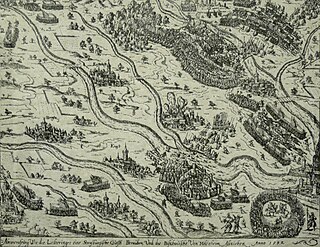 W
WThe Strasbourg Bishops' War (1592–1604) was a conflict between Protestants and Catholics for control of the Bishopric of Strasbourg. It was one of only two sectarian or confessional conflicts, both highly localised, that occurred within the Holy Roman Empire between the Peace of Augsburg (1555) and the outbreak of the Thirty Years' War (1618). It was less bloody than the Cologne War (1583–88). It coincided with the Counter-Reformation and the Spanish Winter (1598–99), and the Catholic victory caused Protestants in Germany great worry that the tide had turned decidedly against them.
 W
WThe Thirty Years' War was primarily fought in Central Europe between 1618 and 1648. Estimates of the total number of military and civilian deaths which resulted range from 4.5 to 8 million, the vast majority from disease or starvation. In some areas of Germany, it has been suggested up to 60% of the population died.
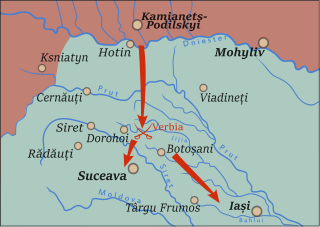 W
WThe Battle of Verbia was the decisive episode in Iacob Heraclid (Despot)'s invasion of Moldavia, taking place on November 18, 1561. Heraclid and Olbracht Łaski's army was backed by the Holy Roman Empire and possibly also by the Knights Hospitaller; it comprised foreign mercenaries, including Spaniards armed with arquebuses, making this the first battle in Moldavian history to be won by superior firepower. The Moldavian military forces under Prince Alexandru Lăpușneanu were backed by Janissaries, but lost crucial support from the cavalry when commander Moțoc defected to the enemy. From the village of Verbia, located outside Dimăcheni, Heraclid's Hungarian troops stormed into Botoșani, slaughtering the surviving Janissaries.
 W
WThe Wars of the Three Kingdoms, sometimes known as the British Civil Wars, were an intertwined series of conflicts that took place between 1639 and 1653 in the kingdoms of England, Scotland and Ireland – separate kingdoms which had the same king, Charles I. The wars were fought mainly over issues of governance and religion, and included rebellions, civil wars and invasions. The English Civil War has become the best-known of these conflicts. It ended with the English parliamentarian army defeating all other belligerents, the execution of the king, the abolition of the monarchy, and the founding of the Commonwealth of England; a unitary republic which controlled the British Isles until 1660.